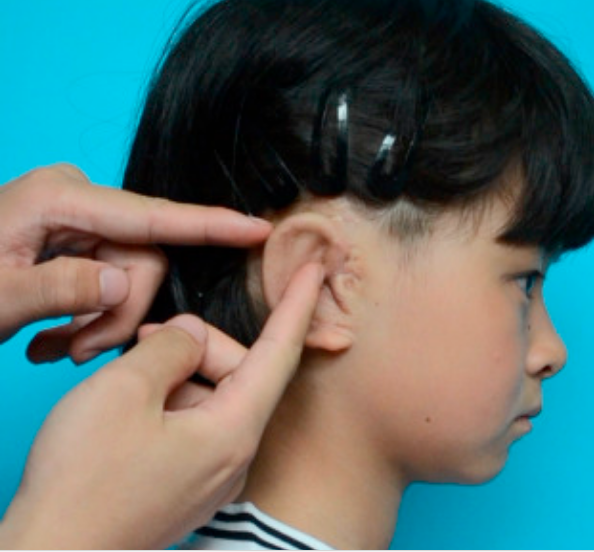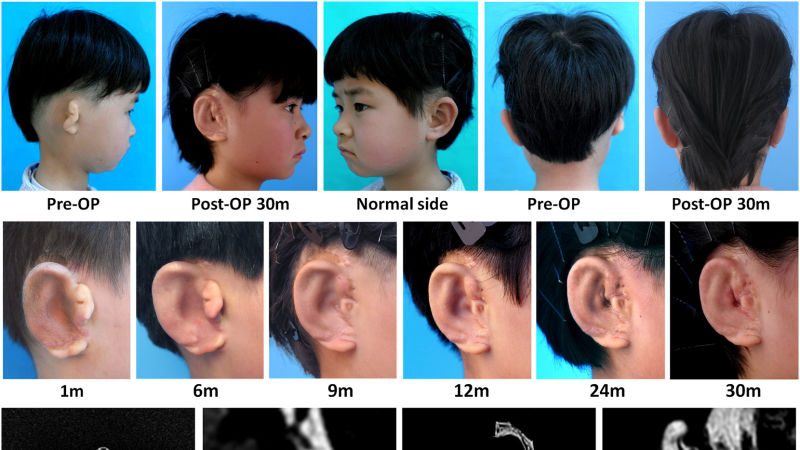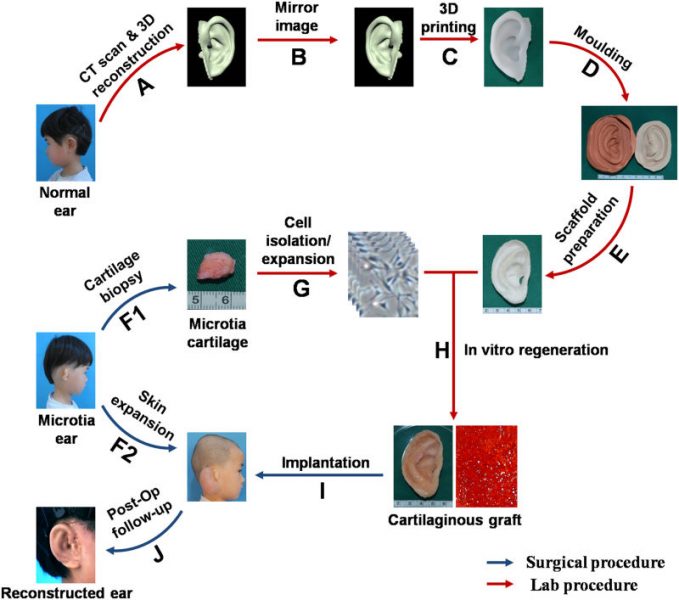 EMERGING TECH
EMERGING TECH
 EMERGING TECH
EMERGING TECH
 EMERGING TECH
EMERGING TECH
Five children in China have been blessed to receive new lab-grown ears, and scientists have said the fact that the ears have not been rejected by the body is quite a feat.
The kids, aged six to 10, were born with a deformed ear or ears. Known as microtia, the deformity “can seriously influence the psychological and physiological well-being of affected children,” according to a scientific review.
Up to now, there has been no treatment other than offering sufferers some solace through cosmetic surgery and giving them a synthetic ear. Scientists said that’s problematic first because, the body can reject the new ear and second because the synthetic version made from rib cartilage doesn’t always look very much like an ear.

Researchers have now solved the problem. The process involves making a 3-D printed model of a child’s healthy ear from a CT scan. The replica, made from biodegradable material, was then filled with tiny holes. The holes were filled with cartilage cells from a child’s deformed ear and grown in the lab over a period of 12 weeks.
The grafting part also took some time, but so far on all the children, the ears have not been rejected, with the last child receiving his new ear just weeks ago. Others have had their printed ears for some time, with the first surgery performed over two years ago. Researchers also said that the longer the child has the ear, the more cartilage grows over the mold and so the more natural it looks.
The New Scientist, which seems to have broken the story in the English language media Jan. 29, spoke to Tessa Hadlock, director of the Division of Facial Plastic and Reconstructive Surgery at the Massachusetts Eye and Ear Infirmary.
“It’s a very exciting approach,” she said. “They’ve shown that it is possible to get close to restoring the ear structure.” She added that a very deformed ear can be distressing for a child and lead to bullying. The children also can’t wear glasses.

It seems the scientists were inspired by that famous photo everyone knows of a mouse with a human ear. It was actually made out of cow cartilage, but shaped to look like an ear and then grafted onto the mouse. The image led to widespread speculation regarding the possibilities of humans with all kids of grafted body parts. Although 3-D printed ears are a great feat, it doesn’t mean scientists will be able to copy that feat with other body parts because the ear is basically just made out of cartilage.
China is apparently leading the way, because regulations in the U.S. and Europe make the process difficult, protracted and expensive, according to a British scientist. Microtia affects around one out of 6,000 to 12,000 children, with about 34,000 children in the U.S. and 7,000 in the U.K. living with the condition as of 2010.
Although the Chinese ears are a move in the right direction, it’s thought the process is too costly and difficult to treat every sufferer that way.
Support our mission to keep content open and free by engaging with theCUBE community. Join theCUBE’s Alumni Trust Network, where technology leaders connect, share intelligence and create opportunities.
Founded by tech visionaries John Furrier and Dave Vellante, SiliconANGLE Media has built a dynamic ecosystem of industry-leading digital media brands that reach 15+ million elite tech professionals. Our new proprietary theCUBE AI Video Cloud is breaking ground in audience interaction, leveraging theCUBEai.com neural network to help technology companies make data-driven decisions and stay at the forefront of industry conversations.